Most LinkedIn posts go ignored, not because the content is bad, but because the audience is cold.
You’re posting to people who don’t know you, trust you, or care (yet).
Warming them up flips that.
It builds familiarity, primes the algorithm, and makes every post work harder.
Here we break down how to warm your feed so your content lands on the screens of people who are ready to listen, interact, and act when it counts.

What “warming up” really means
When people hear “warm-up” on LinkedIn, they often think of account safety.
Things like slowly increasing how many connection requests you send, or avoiding getting banned for using automation tools.
For example, if someone wants to send 100 connection requests a day using a sales tool, they might first send 10, then 20, then 30 to “warm up” the activity and avoid LinkedIn limits.
That’s not what we’re talking about here. Warming up your feed is completely different. It’s about visibility and engagement, not technical limits, profile or hashtag optimization.
It means showing up in other people’s comments, sharing value, and reminding the algorithm that you exist before you post.
Think of it like arriving at a party. You don’t walk in, stand on a chair, and make a big announcement. You greet people first, join a few conversations, and make yourself known. Then, when you have something to share, people are already paying attention.
That’s what warming up your feed does.
Think of it like a pre-show. Before you go live with your post, you show up in the feed.
You leave thoughtful comments, react to relevant content, and start conversations.
Data shows that a single value-packed comment can outperform your average post in views, with 10x less effort
It gives your posts a head start, because people have seen your name, your face, and your voice before your content even goes live.
To make it simple, think of it like a scale: The more you give in advance, the more likely you are to get something back.
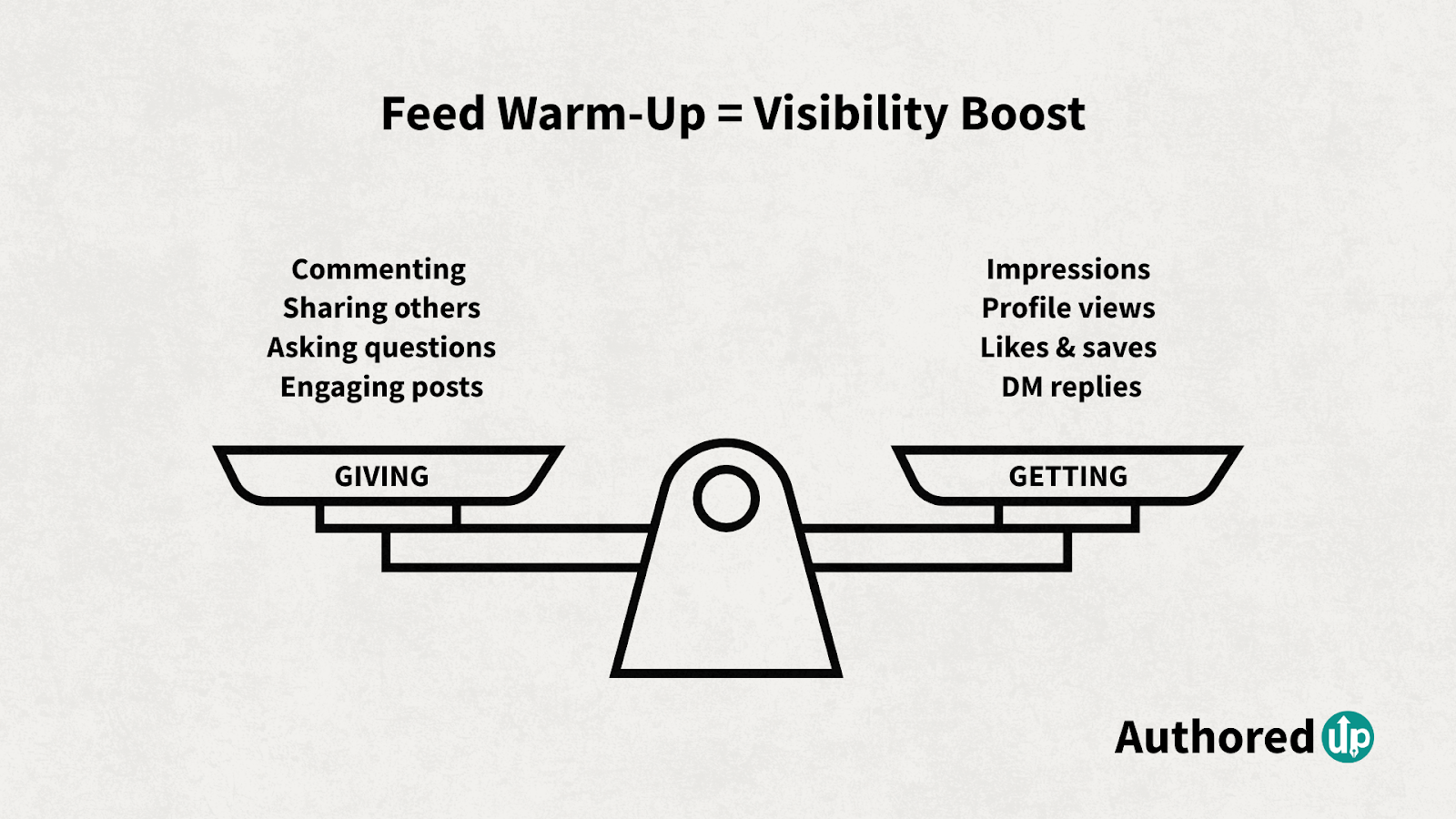
Why “warming up” works: What the LinkedIn algorithm looks for
LinkedIn’s goal is simple: keep people on the platform longer. To do that, it favors content and creators that help make the feed more engaging and more relevant.
The algorithm doesn’t just boost good posts. It boosts people who act like they’re part of the community, those who show up, add value, and spark conversations.
When you comment before you post, you’re doing exactly what LinkedIn wants, you keep others on the platform. By contributing to threads, starting new ones, and pulling people into meaningful discussions.
And LinkedIn notices that. When your name starts popping up in multiple places, they begin tracking replies, reactions, and time spent on your comments. All of that tells the algorithm: this person is worth showcasing more in the feed.
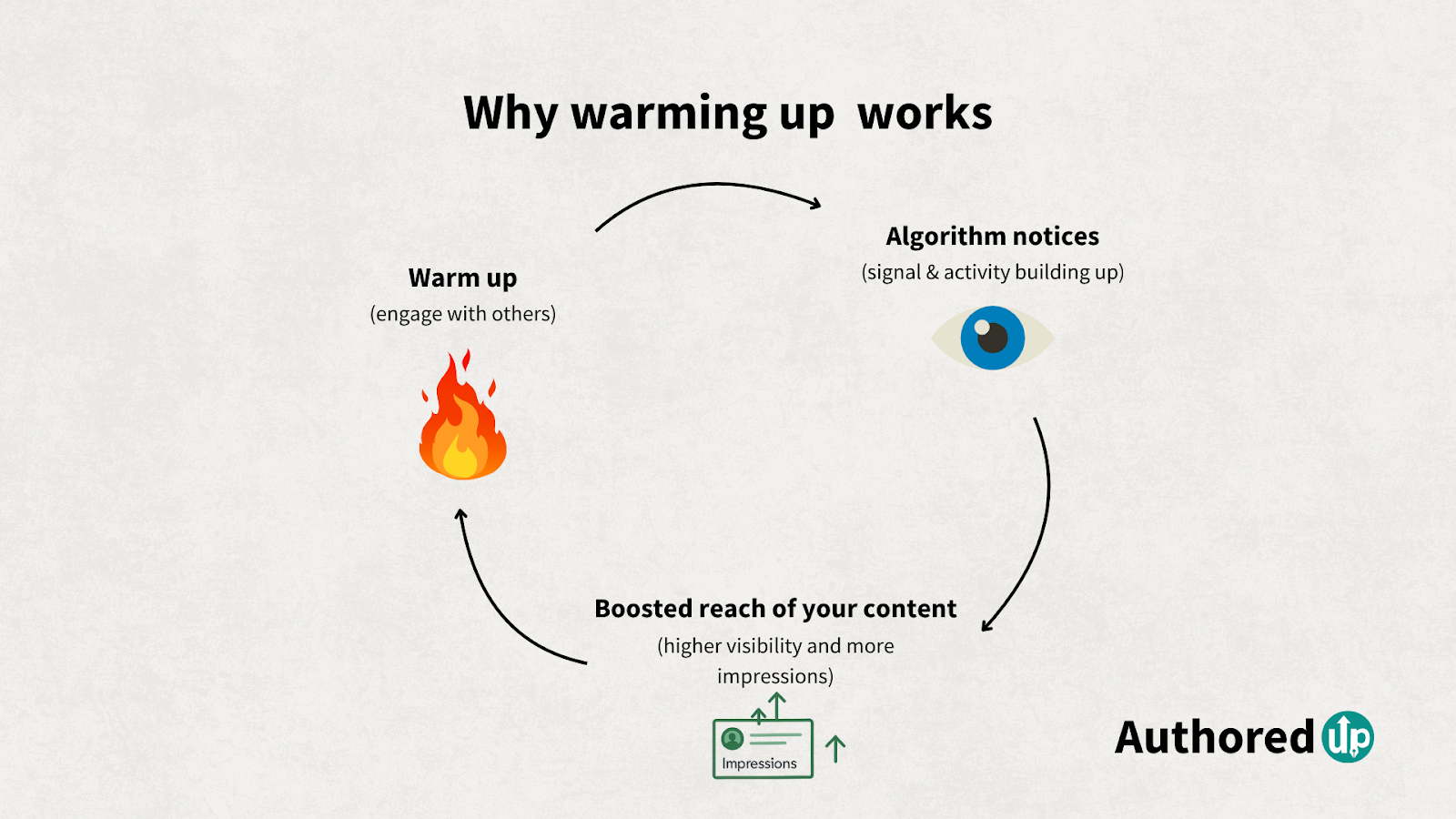
In 2025, even your comments have reach. You can see impressions on them on your phone now, which means they’re actively being distributed by the feed.
.png)
So when you warm up before posting, by engaging with others and showing up where it matters, you’re signaling that you're here to give, not just to get. And platform rewards that by giving your content better placement, stronger reach, and more attention when it counts.
How to warm up the feed in 15 minutes a day
Warming up the LinkedIn feed doesn’t require hours of scrolling or nonstop engagement.
A focused 15-minute routine, done consistently, can create lasting visibility and stronger post-performance.
Here’s how to make those minutes count:
1. Start with posts that make sense to engage with
The warm-up begins by picking the right content to join.
It helps to focus on posts from people in the same space, creators who attract a similar audience, or topics that feel relevant to the work being shared.
No need to chase viral reach because high-volume posts often attract the wrong crowd anyway. What is written for everybody doesn't serve anybody.
The best results tend to come from showing up in places where conversations are happening around things that actually matter.
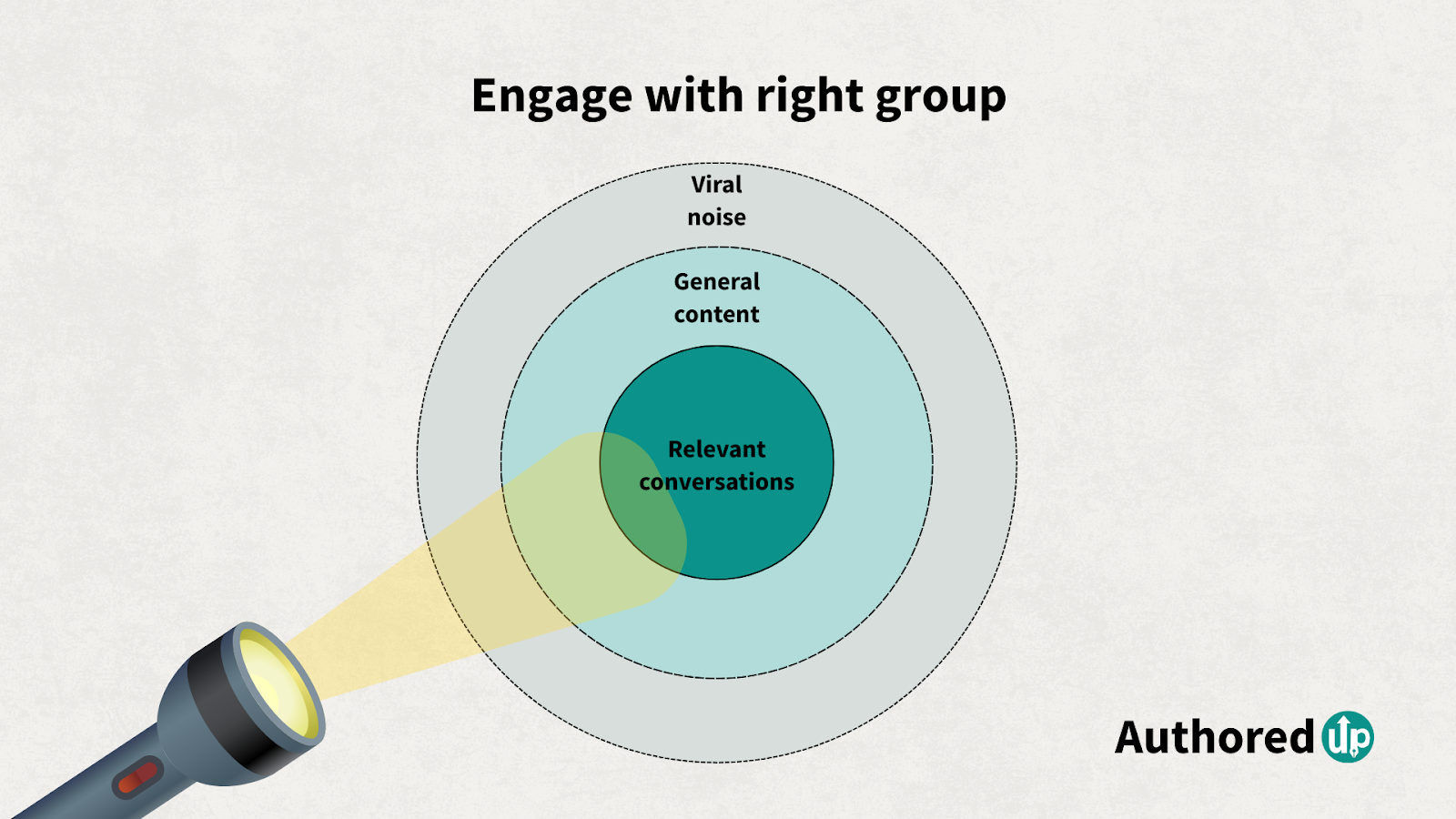
2. Make comments that contribute, not just fill space
One-line comments like “Great post!” don’t leave a mark.
The goal is to write something that adds context, sparks thought, or keeps the thread alive.
Instead, aim for 3 to 5 lines that add a new angle, share a quick story or example, ask an engaging question, or tell a personal insight
A comment that makes people stop and think is more powerful than most posts.
It earns visibility, drives profile views, and shows up in people’s feeds, even before you publish anything.
In some cases, a thoughtful comment gets more reach than a mediocre post. A single comment boosts your chances of seeing that creator’s next post by 80%
3. Engage with other comments too
Replying to other commenters, not just the original poster, opens up new visibility paths.
It can be a reaction, a clarification, or a “yes, and” kind of addition.
This small move does a lot. It signals that there’s attention on the thread and that the person replying is active and paying attention to the wider conversation.
Indirect comments actually increase the reach by more than 2.4 times.
It keeps people on the platform longer, and the algorithm rewards those who help make that happen.
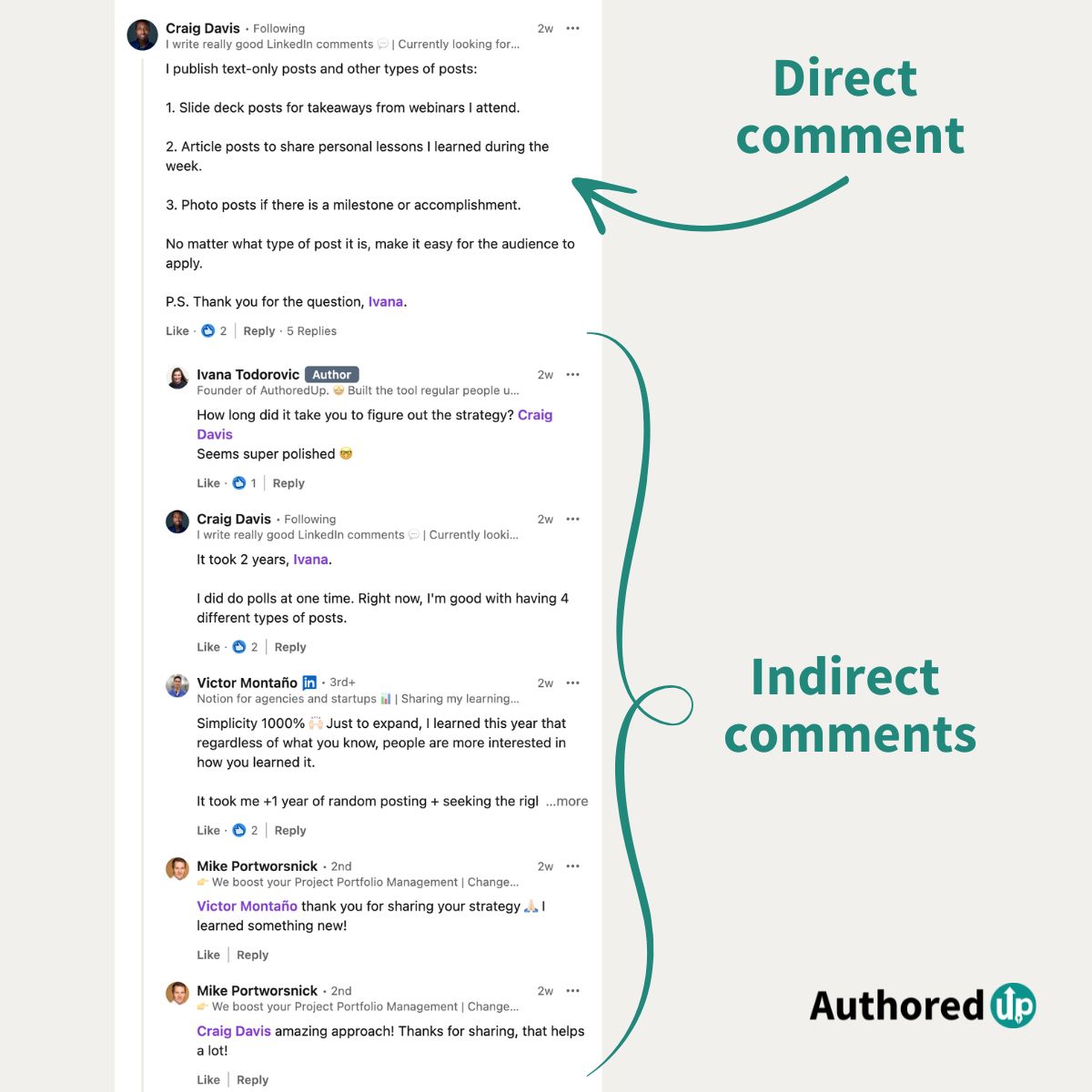
4. Consider the timing
You can warm up daily, but it’s especially useful in the hour before you publish.
Commenting 15 to 30 minutes before posting helps your name appear fresh in the feed. That activity nudges the algorithm and reminds your audience you’re already in the conversation.
When your post goes live, it lands on warmer ground.
People recognize you, the system recognizes you, and your content gets picked up faster.
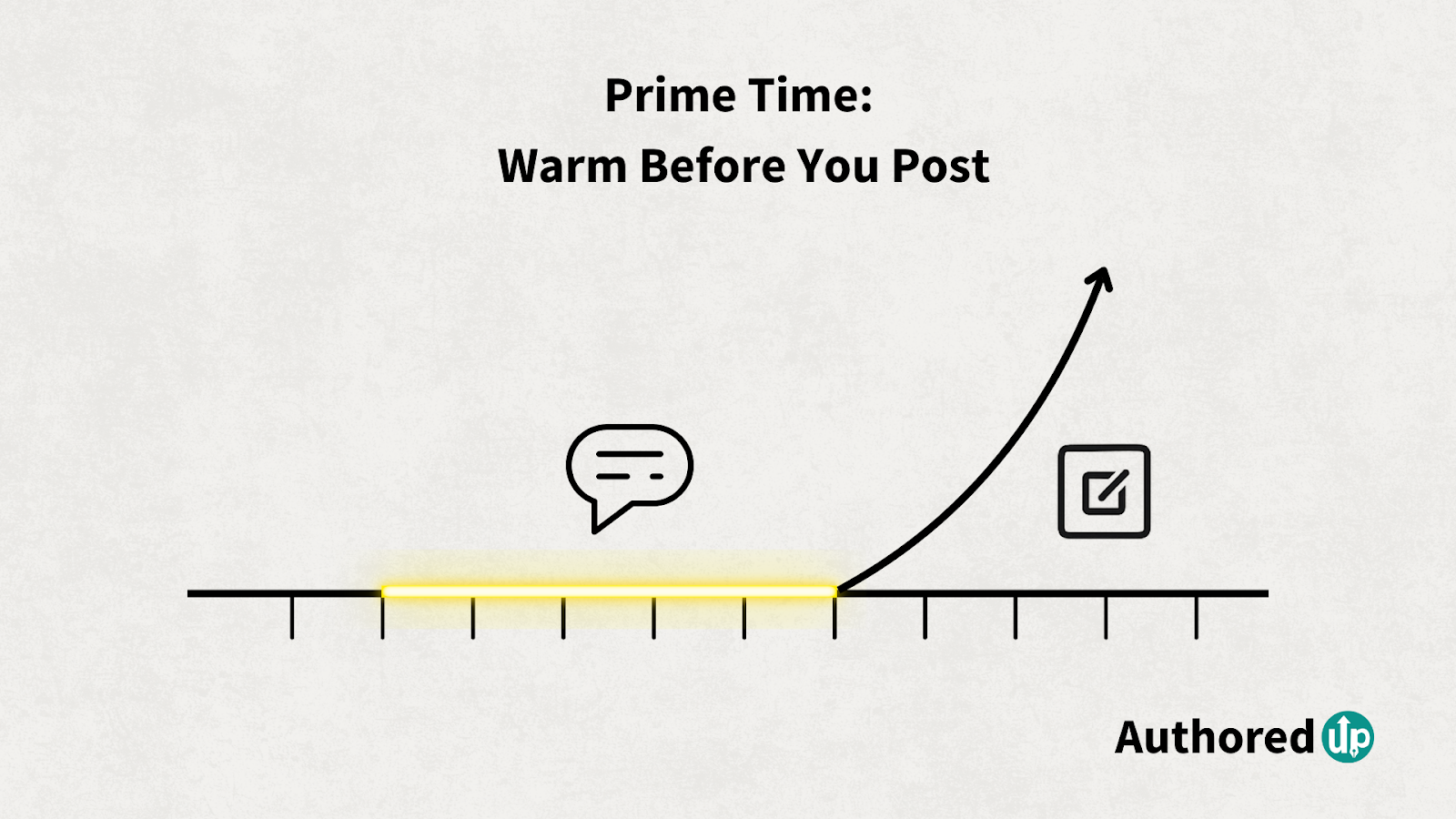
5. Focus on relevance
This isn’t about blasting out 10 comments and calling it a day.
Better write 3 relevant, thoughtful ones that go further than a dozen throwaways.
It’s more about being remembered than being seen everywhere.
6. Comments are micro-content
The best comments don’t just support someone else’s post, they stand on their own.
They can also get reshared, spark DMs, or lead to profile visits. In some cases, they become the starting point for the next post.
That’s the sign of a warm-up that’s doing more than just checking a box. It’s building something that lasts beyond the thread.
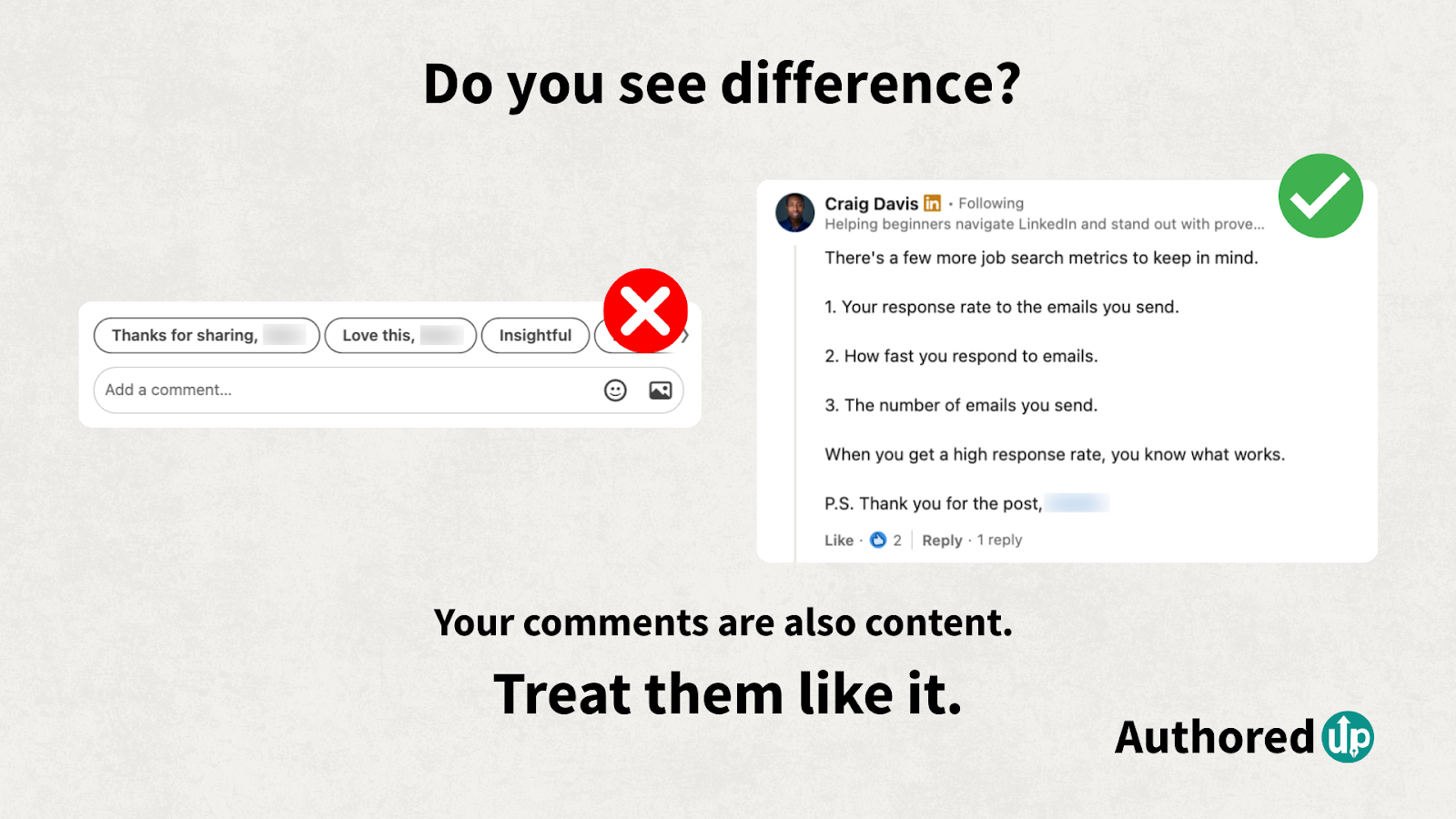
What to do after you post
Posting is not the end of the process. What happens right after a post goes live can often shape how far it travels.
The algorithm watches for early signals. If there's interaction in the first 30 to 60 minutes, the post has a stronger chance of getting pushed to more feeds..
The best move after posting is to stay active. Return to the comments section, respond quickly, and add depth to the conversation. Every reply is a chance to boost visibility, not just for the post, but for the entire profile.
Engaging with early commenters shows the audience, and the algorithm, that you’re here for the conversation. It also helps to continue showing up elsewhere in the feed.
If you want to get even better results, continue commenting on 5 to 10 other posts after publishing yours.It puts the profile in front again, and in some cases, even pulls people back to the original post through the notification loop. Instead of going silent, this approach keeps things moving.
By sticking around and making sure you answer every comment you get, you make every future warm-up easier. When people feel seen after engaging, they’re more likely to come back. That’s how a cold audience starts to turn warm through simple, consistent interaction.
Warm Up Your Audience with AuthoredUp
AuthoredUp helps you stay consistent and intentional.
Draft your posts with bold, italics, bullet points, and emojis that make your message clear and skimmable. Pull from 200+ hooks and 150+ CTAs when you need inspiration that doesn’t feel forced.
Use the Preview to check how your post looks on desktop and mobile.
Save ideas in Drafts and keep refining them when you are ready.
Check your personal hotspots to publish when your audience is most active. Add a reminder to engage before posting.
After it’s live, track what’s working with analytics that show real progress cues, not just likes.
Read more
Discover 40 expert tips to stand out on LinkedIn that will help you craft content people can’t scroll past.
Find out everything you need to know about LinkedIn engagement to improve visibility and interaction.
Explore the best days to post on LinkedIn to make sure your content hits when your audience is most active.
FAQ
1. How long should the warm-up last before posting?
Usually is it enough around 15–30 minutes of engagement before posting. If it’s been quiet for a while, give it a few days. Warm-up works best when it’s done regularly, not just when there’s something to promote.
2. Can someone warm up too much?
Yes, if it gets random. Leaving 30 low-effort comments on unrelated posts won’t help.The goal is to be seen in the right places, not just everywhere.
3. Should warm-up timing follow when the audience is active?
Definitely, the best time to engage is the same time people are online. If a post is planned for the morning, warm up before that. Tools like audience hotspots can help pick the right window.
4. Does the warm-up stop once the post is live?
No, it actually becomes even more important. Post performance depends on how much activity happens after it's published. Replying to comments and continuing conversations signals that the post matters, which helps it travel further in the feed.
5. Can engagement warm-up be automated?
It’s not recommended. Automated engagement often looks spammy and can harm your profile. LinkedIn rewards real interactions—actual people adding value to real conversations. It’s better to do less, but do it well and with intention.



.svg)

.png)

.svg)
.png)

.svg)
.png)
.png)